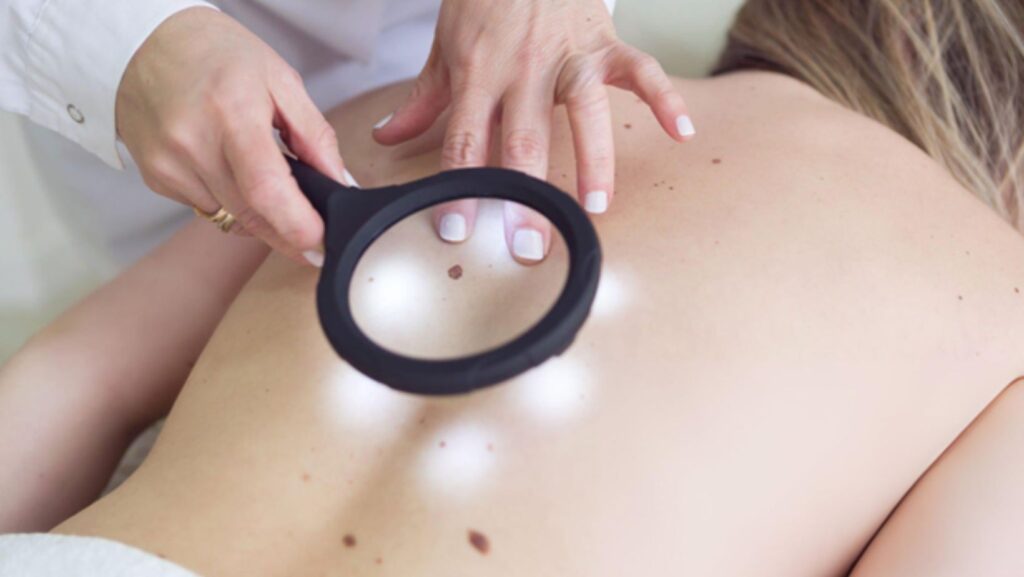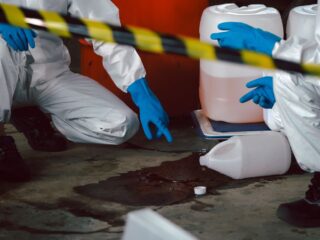
Moles are common skin growths that can appear anywhere on the body. While many moles are harmless, some people choose to remove them for cosmetic reasons or due to concerns about skin cancer. At-home mole removal may seem like a simple solution, but it’s essential to approach it with caution. In this article, we’ll explore safe practices for mole removal at home, the risks involved, and alternative methods for handling suspicious moles.
Identifying Suspicious Moles
Before attempting to remove a mole at home, it’s essential to assess whether it could be dangerous. The ABCDE rule is a useful guide for identifying suspicious moles that may require professional evaluation. Here’s what to look for:
- A – Asymmetry: One half of the mole doesn’t match the other.
- B – Border: The edges are irregular, ragged, or blurred.
- C – Color: The mole has uneven colors or multiple shades of brown, black, red, white, or blue.
- D – Diameter: The mole is larger than 6mm, roughly the size of a pencil eraser.
- E – Evolving: The mole changes in size, shape, or color over time.
If your mole exhibits any of these signs, it’s best to consult a dermatologist before proceeding with removal. Self-removal of suspicious moles can delay a proper diagnosis, potentially leading to severe health consequences.
Safe At-Home Mole Removal Practices
For those seeking to remove a harmless mole for cosmetic reasons, there are a few methods that can be used safely at home. However, it’s essential to follow proper precautions and guidelines.
Over-the-counter (OTC) Mole Removal Creams
One of the most common methods for at-home mole removal is using over-the-counter mole remover creams. These creams are designed to dry out the mole, causing it to scab and eventually fall off. It’s important to follow the instructions carefully to avoid scarring or infection.
- Step-by-step:
○ Clean the area around the mole.
○ Apply the mole remover cream as directed.
○ Cover the area with a bandage.
○ Allow the mole to dry and fall off naturally.
While convenient, these creams are not guaranteed to work and may cause irritation or scarring, especially on sensitive skin.
Natural Remedies
Some people prefer natural remedies, such as applying apple cider vinegar or garlic to a mole. These substances are believed to break down the mole’s tissue, causing it to eventually fade away. Although natural remedies can be effective for some, they are not scientifically proven and can cause skin burns or irritation if not used properly.
- Apple Cider Vinegar: Soak a cotton ball in apple cider vinegar and apply it to the mole for about 20 minutes daily.
- Garlic: Crush a garlic clove and apply the paste to the mole, covering it with a bandage for several hours a day.
Cryotherapy Kits
Cryotherapy is a method of freezing the mole off using liquid nitrogen. At-home cryotherapy kits are available at pharmacies and work similarly to how doctors remove moles in a clinical setting.

- Step-by-step:
○ Use the applicator provided in the kit to apply liquid nitrogen to the mole.
○ The mole will freeze, blister, and eventually fall off within a few weeks.
While these kits can be effective, they must be used with care to avoid damaging surrounding skin.
Risks of DIY Mole Removal
Although at-home mole removal may seem convenient, it carries several risks, especially when dealing with moles that have not been properly diagnosed by a healthcare professional.
Infection
Any method that involves cutting, scraping, or burning the mole can lead to an open wound. If not properly cared for, this wound can become infected, leading to complications such as swelling, redness, and pus.
Scarring
Even when using safe methods, there is always a risk of scarring. The skin may heal unevenly, leaving a permanent mark.
Misdiagnosis of Skin Cancer
Removing a mole at home without professional evaluation can lead to a missed diagnosis of melanoma or other skin cancers. If the mole is cancerous, removing it without proper margins can allow the cancer to spread unnoticed.
Ineffectiveness
DIY mole removal techniques do not guarantee results. In some cases, the mole may not be completely removed or may grow back, requiring further treatment.
For these reasons, it’s always wise to consider professional removal, especially for suspicious moles.
Alternatives to Home Mole Removal
If you’re unsure about removing a mole at home or concerned about the risks, there are safer alternatives that involve professional help.
Surgical Removal
A dermatologist can surgically remove the mole under local anesthesia. This method ensures that the entire mole is removed, reducing the risk of regrowth and scarring.
Laser Treatment
For smaller, benign moles, laser treatment is a non-invasive option. The mole is targeted with concentrated beams of light, breaking down the pigment and causing it to fade away over time. Laser treatments are usually painless and minimize scarring.
Shave Excision
In this method, the dermatologist uses a small blade to shave off the mole at the skin level. It’s quick and typically leaves a small, barely noticeable scar.
Cryotherapy
As mentioned earlier, cryotherapy can be performed in a clinical setting using professional-grade equipment.

This method is more precise and effective than at-home kits.
By choosing professional removal methods, you reduce the risks of infection, scarring, and potential misdiagnosis of skin cancer.
Preventive Measures to Avoid Mole Formation
Although some moles are hereditary or appear naturally with age, there are steps you can take to minimize the formation of new moles, especially those caused by sun exposure.
Use Sunscreen
Wearing broad-spectrum sunscreen with at least SPF 30 can help protect your skin from harmful UV rays that contribute to mole formation and increase the risk of skin cancer.
Wear Protective Clothing
When spending time outdoors, wear hats, long sleeves, and sunglasses to shield your skin from the sun.
Avoid Tanning Beds
Tanning beds expose your skin to concentrated UV radiation, which increases the risk of developing new moles and skin cancer.
Regular Skin Checks
Perform regular skin checks to monitor any changes in existing moles or the appearance of new ones. Early detection is key to preventing skin cancer.












